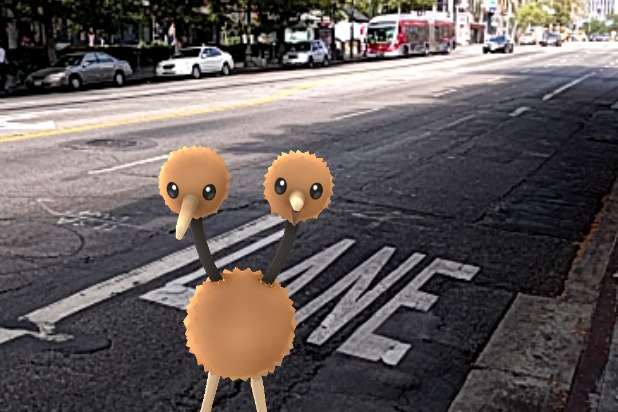Guys. I swear to you I’m not on Western and 3rd right now playing Pokemon Go. I swear I didn’t just catch Merfuffle and jump up and down while an old woman stared at me like I was crazy. But unfortunately, regardless of the fact that I am NOT playing Pokemon Go right now, I bring you the bad news that there is no post today. Or is that bad news? Might that mean you have more time to work on your REWRITES that you’re supposed to be doing??! Hmmmmmm???? I mean it is National Screenwriting Day today, a day I just made up the second I opened this document.
But I can’t leave you guys hanging. So I thought I’d offer a dialogue tip before I go. I’ve been noticing this mistake a lot lately so what better time to bring attention to it. Today’s tip is about LEADING QUESTIONS in dialogue. Guys, leading questions are baaaaaaad. A “leading question” is a question that artificially keeps the dialogue going. Usually, it’s a butchered way to extract information from a character for the benefit of the reader. Here’s an example from a post-apocalyptic script I just made up a second ago. In it, bad guys are descending upon the good guys’ base. Joe and Jane are part of the good guys:
JOE: We only have a few minutes before they get here.
JANE: And what happens when they get here?
Do you see that there’s no realism to Jane’s question. It’s only there to extract information from Joe for the audience’s benefit. So Joe would answer something like, “They’ll use our radio to contact reinforcements and then we’re toast. We have to protect that radio.” Is important information being conveyed? Sure. But it’s hackneyed and artificial. To avoid this mistake, try to see the dialogue as if it were happening in the real world, where your characters don’t have to inform a giant invisible audience of any information. If that were the case, I’m sure Jane would already know what happens when they get here. So the exchange would go more like this:
JOE: We only have a few minutes before they get here.
JANE: I’ll go warn Kate.
Much more natural, right? Of course, this begs the question, how do you then convey information that needs to be conveyed? Well, now we’re getting into a different discussion – hiding exposition. But the bare-bones answer is to get creative and avoid the obvious. One method is to make the audience do some of the work. That way they feel like they’ve earned the information. For example, the new exchange might go down like so:
JOE: Where’s the radio?
JANE: Kate has it.
JOE: We only have a few minutes before they get here.
JANE: I trust her.
Joe takes a deep breath. He’s not so sure.
While it’s not handed to us on a platter, we can deduce from this exchange that the radio is important and that it may need to be protected from these people who get here. The main point is you don’t want to get into a basic A-B “leading question,” “return answer” pattern in your dialogue exchanges. You want to avoid this:
MIKE: I need to go to the bathroom.
CAROL: Why do you need to go to the bathroom?
MIKE: That’s where I stashed the dope.
CAROL: What are you going to do with it when you get it?
MIKE: I’m going to call Frank.
CAROL: Why Frank?
Real world dialogue doesn’t work like that. So neither should movie dialogue.


